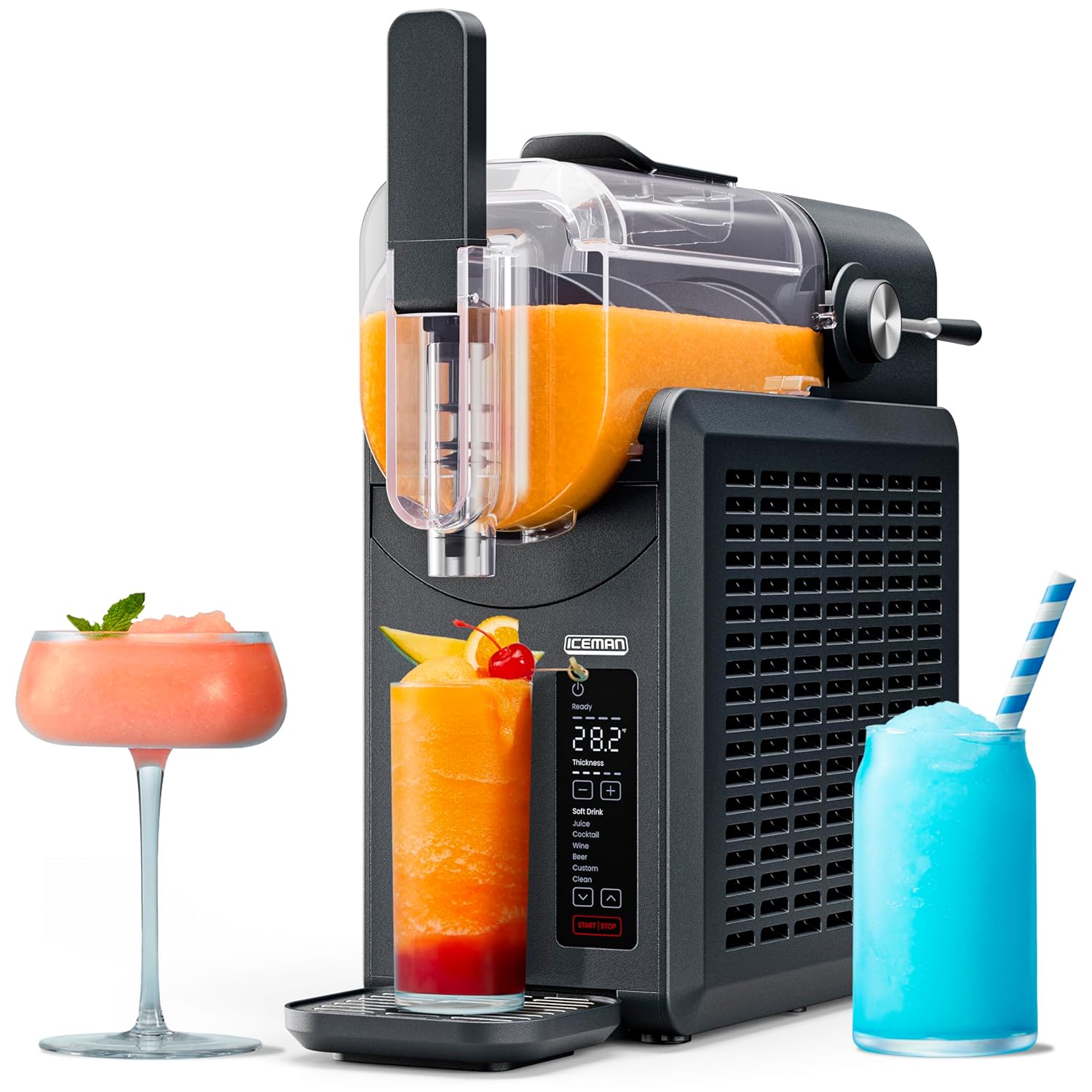Introduction
A slushie machine for commercial use can be the game-changing upgrade that turns casual customers into loyal regulars and transforms hot summer days into record-breaking sales events. In the competitive food and beverage industry, the difference between mediocre performance and booming business often comes down to offering unique, irresistible products—and few things are as tempting as an ice-cold, colorful, and flavorful slushie.
If you’ve been relying solely on bottled drinks or standard fountain sodas, you’re missing out on a lucrative market segment. Slushies aren’t just beverages—they’re experiences, and they’re proven to boost impulse purchases, increase foot traffic, and encourage repeat visits.
Why a Slushie Machine for Commercial Use is a Profitable Asset
Commercial slushie machines are specifically designed to meet the demands of busy restaurants, cafés, bars, convenience stores, and mobile vendors. Unlike small home units, these machines deliver:
-
High Volume Output – Capable of producing multiple gallons per batch, ensuring you never run dry during rush hours.
-
Consistent Quality – Every cup has the same texture, flavor, and chill factor, keeping customers satisfied.
-
Visual Appeal – Bright, swirling colors act as free advertising, drawing in customers from afar.
-
Versatility – Perfect for frozen cocktails, coffee frappes, iced teas, and even healthy smoothie blends.
Profit margins can be staggering—slush drinks often cost less than $0.50 per serving to make but sell for $3–$6, depending on location and flavor variety.

Key Features to Look for in a Commercial Slushie Machine
1. Capacity & Tank Size
Commercial slushie machines come in a range of sizes, from compact 3-gallon units to massive multi-tank systems holding 15 gallons or more. Your choice should match your expected demand. For high-traffic locations, bigger tanks mean fewer refills and less downtime.
2. Number of Tanks
-
Single Tank – Best for smaller spaces or single-flavor offerings.
-
Dual/Triple Tanks – Allow multiple flavors, seasonal specials, or even alcoholic and non-alcoholic options side by side.
3. Cooling System
-
Air-Cooled – Easier to install but requires good ventilation.
-
Water-Cooled – Quieter and more efficient in hot environments, but needs a water hookup.
4. Freezing Speed
Fast freeze times mean you can keep up with sudden rushes and avoid losing customers to long waits.
5. Ease of Cleaning
Look for models with self-cleaning cycles, detachable parts, and minimal nooks where residue can build up.
How to Use a Slushie Machine for Maximum Profit
-
Offer Signature Flavors – Think beyond blue raspberry and cola. Create unique recipes like lavender lemonade, mango chili, or matcha frappe.
-
Run Seasonal Promotions – Pumpkin spice slushies in autumn or peppermint mocha frappes in winter.
-
Add a Boozy Twist – For bars and nightclubs, frozen margaritas and daiquiris are crowd favorites.
-
Upsell with Toppings – Whipped cream, candy pieces, fruit chunks, or syrup swirls can add perceived value.
-
Bundle Deals – Pair slushies with food items at a slight discount to boost ticket size.
Maintenance Tips to Keep Your Machine Running Smoothly
-
Daily Cleaning – Prevents bacterial buildup and keeps flavors fresh.
-
Lubricate Seals & Gaskets – Extends the lifespan of moving parts.
-
Check Temperature Settings – Ensure consistent freezing for perfect texture.
-
Schedule Professional Servicing – At least once a year for optimal performance.

Cost Breakdown: Investment vs. Return
A high-quality slushie machine for commercial use can range from $1,200 to $5,000 depending on size and features. While this may seem like a big expense, consider this:
-
Average cost per cup (including syrup, cup, and straw): $0.50
-
Average selling price per cup: $3.50
-
Profit per cup: $3.00
-
Selling just 50 cups per day can generate $150 profit daily—meaning the machine could pay for itself in as little as 1–3 months.
FAQs
1. How much does a slushie machine for commercial use cost?
A slushie machine for commercial use typically ranges from $1,200 to $5,000 depending on capacity, number of tanks, and special features like self-cleaning or quick-freeze technology.
2. What size slushie machine should I get for my business?
The right size depends on your daily demand. Small cafés may only need a 3–5 gallon unit, while high-traffic venues or events often require 10–15 gallons or more.
3. Can I use a slushie machine for alcoholic drinks?
Yes! Many bars and event vendors use a slushie machine for commercial use to make frozen margaritas, daiquiris, and other cocktails—just be sure your model supports alcoholic mixes.
4. How long does it take for a commercial slushie machine to freeze?
Most commercial machines take 45–90 minutes to fully freeze a fresh batch, though high-speed models can reduce that time to under 30 minutes.
5. How do I maintain a slushie machine for commercial use?
Daily cleaning is essential. Disassemble and wash all removable parts, sanitize the tanks, lubricate seals, and schedule professional servicing at least once a year.
6. Are commercial slushie machines energy-efficient?
Modern models often come with energy-saving modes and insulated tanks to reduce power consumption without compromising performance.
7. Can I serve dairy-based drinks in my slushie machine?
Some machines are designed for dairy-based recipes like frozen coffee or milkshakes. Always check the manufacturer’s guidelines before use.

The Bottom Line
A slushie machine for commercial use isn’t just another piece of equipment—it’s a high-margin, customer-attracting, revenue-boosting powerhouse. From small cafés to large-scale event vendors, the right machine can help you stand out in a crowded market, keep customers cool and happy, and generate steady profits year-round.
Disclosure: As an Amazon Associate, I earn from qualifying purchases.

